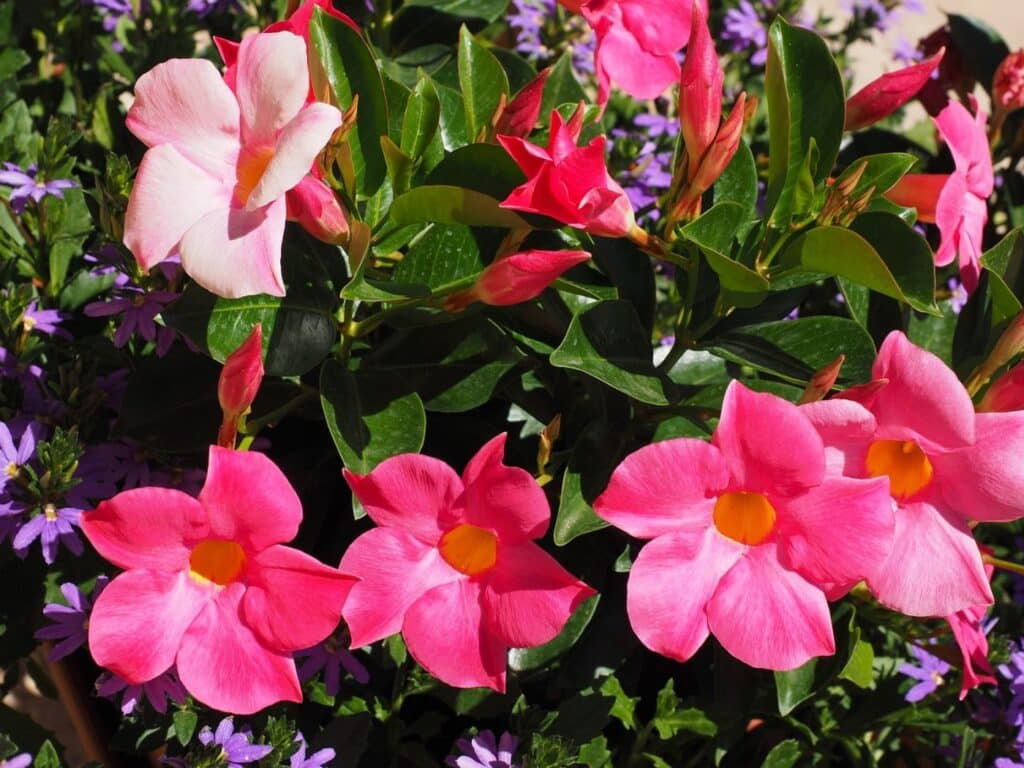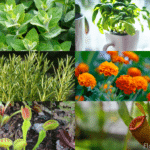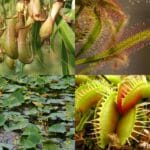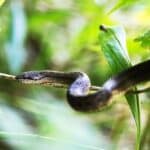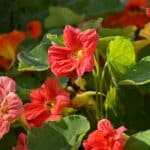Ever noticed the vibrant green leaves of your Mandevilla plant taking on a sickly yellow hue? It’s a disheartening sight for any plant lover and can leave you scrambling for solutions. But don’t despair just yet. Understanding the causes behind this common issue is the first step towards restoring your plant’s health.
Yellowing Mandevilla leaves can be a warning sign of several problems, from water stress to nutrient deficiencies. But with a bit of detective work, you’ll be able to pinpoint the issue and take corrective action.
Stick with us as we delve into the reasons behind this yellowing dilemma and offer practical solutions to get your Mandevilla back to its lush, green glory.
Understanding Mandevilla
Deepening your knowledge about Mandevilla plants aids in identifying the signs and symptoms of a problem such as yellowing leaves. Let’s delve into the basics of Mandevilla plants and what constitutes a healthy specimen.
What Is a Mandevilla Plant?
A Mandevilla plant, part of the Apocynaceae family, originates from Central and South America. It’s recognized for its stunning, trumpet-shaped flowers and climbers that create a striking visual impact in patios, balconies, and gardens.
This tropical native flourishes under full sunlight and consistent warmth, highlighting the need for careful monitoring when grown in cooler climates.
Common Characteristics of Healthy Mandevilla Plants
Healthy Mandevilla plants bear a distinct set of features.
Firstly, they exhibit lush, dark green leaves that provide a fitting backdrop for their vibrant flowers. These flowers can range from pink to red, adding a splash of color to your space.
Secondly, robust growth signifies a healthy Mandevilla, with rapid vine extension indicating optimal conditions.
Lastly, the absence of wilted leaves, brown spots, and yellowing indicates the plant’s well-being. For example, your Mandevilla plant’s leaves retain their green hue, confirming that they are receiving sufficient nutrients and care.
The Phenomenon of Yellowing Leaves
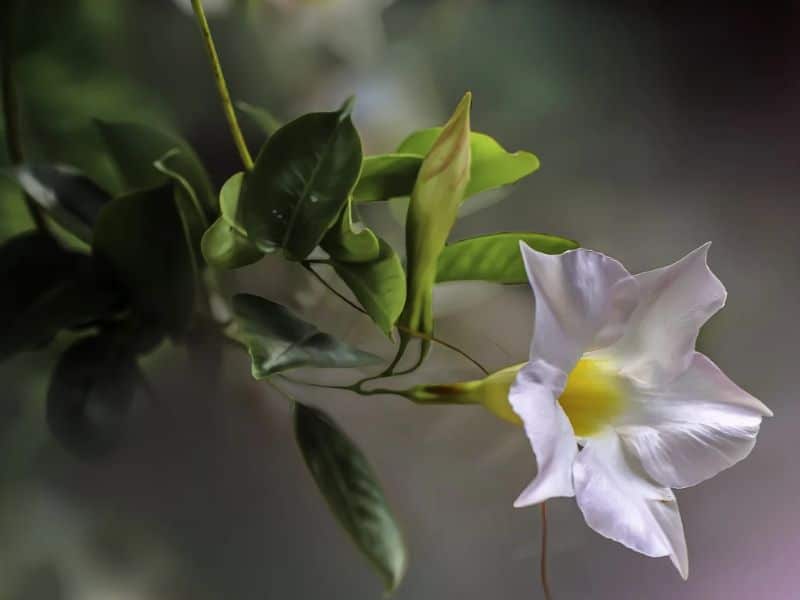
This section delves into the various factors that could explain yellowing leaves on the Mandevilla plant.
The Natural Aging Process
First, the natural aging process impacts the Mandevilla plant, comparable to other organisms. You’ll notice older leaves lower on the stem occasionally turning yellow and eventually dropping off. It’s a routine part of the plant’s life cycle.
However, the plant typically generates new foliage to replace those that have fallen. If there’s a noticeable increase in the rate of yellowing and dropping, it suggests an issue beyond natural aging.
Seasonal Changes Impacting Mandevilla
Second, seasonal changes influence Mandevilla leaves significantly. As winter approaches, there’s a decrease in light and temperature. These conditions often lead to a change in leaf color from lush green to yellow.
Thus, if you’re witnessing the yellowing of Mandevilla leaves during autumn or early winter, it’s largely due to the change in seasons. Nevertheless, ensure that the plant experiences minimum stress by keeping it in warm, brightly lit conditions, even during the cooler months.
Common Causes for Mandevilla Leaves Turning Yellow

Watering Issues
Incorrect watering remains a common culprit for yellowing Mandevilla leaves. Overwatering leads to water-logged roots, denying them proper oxygen. Conversely, underwatering results in dry roots, disrupting nutrient uptake. Both scenarios can cause the leaves to turn yellow.
Lighting and Temperature Stress
Lighting and temperature can influence Mandevilla leaf health. Excessive sunlight, paired with high temperatures, can scorch leaves, causing a yellow hue. Likewise, insufficient light, coupled with cold conditions, can trigger the plant to conserve energy, manifesting as yellow leaves.
Nutrient Deficiencies
Plants are dependent on essential nutrients for growth. A lack of these nutrients, specifically Nitrogen, Iron, and Magnesium, often reflects in Mandevilla leaves, presenting as yellow discoloration. Regular supplementing with an all-purpose plant food can rectify this deficiency.
Diagnosing the Problem
Your Mandevilla plant, in its prime, exudes beauty through lush, dark green leaves, vigorous growth, and vibrant flowers. However, yellowing leaves may indicate underlying problems. By signs such as watering, pest infestations, or diseases, diagnosing these issues becomes possible.
Signs of Overwatering vs. Underwatering
Overwatering and underwatering both pose serious threats to your Mandevilla plant. Overwatered Mandevilla reveal their stress with leaves that darken and gradually turn yellow, often coupled with edema; small blister-like bumps on leaf surfaces.
On the contrary, underwatered Mandevilla exhibit a different distress signal. Leaves wilt and dry, eventually embracing a crisp, yellow hue. Armed with these signs, appropriate watering adjustments can mitigate adverse effects on your Mandevilla.
Identifying Pest Infestations
Invasive pests inflict harm on your Mandevilla plant, prompting yellow leaves as a distress call. Aphids, mealybugs, and spider mites are notorious offenders.
Upon close inspection, infested plants show signs such as sticky residue (honeydew), cotton-like substances, or even tiny web structures. By identifying these signs, pest control measures can be employed, revitalizing your Mandevilla’s health.
Detecting Diseases
Diseases could also be the culprit behind your Mandevilla’s yellow leaves. Fungal and bacterial diseases often manifest as yellow leaf spots, brown patches, or gray mold signs. Upon detecting these, immediate treatment becomes critical, sparing your plant from potential devastation and ensuring its continued growth and beauty.
Solutions and Preventative Measures
Proper Watering Techniques
Managing water supply plays a key role in preventing yellowing leaves in Mandevilla plants. Overwatering suffocates roots, causing them to turn yellow and eventually fall off, while underwatering deprives roots of essential hydration, leading to the same outcome.
Adjust your watering schedule based on plant size, pot size, and environmental conditions. For example, small plants in large pots require less watering compared to large plants in small pots. Remember, Mandevillas prefer a thorough watering, letting the top of the soil dry out a bit before the next hydration session.
Optimizing Light and Temperature
Give your Mandevilla plants an ideal mix of light and warmth for ultimate growth. Direct sunlight for five to six hours a day usually suffices. Yet, they don’t mind a little shade, especially when afternoon temperatures skyrocket.
Indeed, too much light burns the leaves and turns them yellow. Also, keep the indoor temperature between 60 – 70 degrees Fahrenheit in the day and 55 – 60 degrees Fahrenheit at night for best results.
Fertilization and Soil Management
Nutrient-rich soil is another prerequisite for Mandevilla plants’ health. Use a slow-release granular fertilizer filled with all essential nutrients, like Nitrogen, Phosphorus, and Potassium, in the right proportions.
Apply it once a month during growing season and avoid it completely during winters. Simultaneously, maintaining good drainage for the soil is vital. Choose a potting mix designed for “cacti and succulents” or create your own blend with garden soil, compost, and some coarse sand.
Professional Tips for Mandevilla Care
Pruning and Maintenance Practices
Pruning serves as an integral step in taking care of your Mandevilla plant. Regular trimming helps maintain optimum plant health. Aim for a pruning schedule once every two months, focusing on removing dead leaves and twiggy growth.
But remember, over-pruning must be steadfastly avoided due to its detrimental effects on the plant. Greater emphasis should be placed on using disinfected tools – a valuable practice, deterring the spread of diseases.
Choosing the Right Location and Container
Picking the perfect spot and pot for your Mandevilla plant is a pivotal decision. These plants favor bright, indirect light—making east and west-facing windows an ideal option.
Furthermore, Mandevilla plants incline to warmer temperatures, which is why you’ll find they thrive indoors during cooler months. As for the container, opt for a pot that accommodates the plant’s initial size with space for growth.
Prioritize containers with adequate drainage, preventing over-watering and promoting root health. Remember, the pot’s material also counts. Terracotta pots tend to absorb excess moisture, making them a preferable choice for maintaining Mandevilla plants.
FAQs
What causes yellow leaves on a Mandevilla plant?
Yellow leaves on a Mandevilla plant can be due to several issues, including problems with watering, lighting, temperature stress, and nutrient deficiencies.
How can I tell if my Mandevilla plant is over or underwatered?
Overwatered Mandevilla plants may have leaves that turn yellow and wilt, while underwatered plants show signs of dry, yellow, and droopy leaves.
What type of pests can affect my Mandevilla plant?
Common pests that can infest a Mandevilla plant include aphids and spider mites, which can lead to yellowing leaves if left unchecked.
How should I properly water my Mandevilla plant?
Make sure to water the Mandevilla plant based on its size and the pot size. Maintain good drainage to avoid drowning the plant roots.
How can I manage the light exposure and temperature for my Mandevilla plant?
Optimize the light exposure of your Mandevilla plant by placing it near an east or west-facing window. Favor warmer indoor temperatures during cooler months.
What nutrients do Mandevilla plants require?
Mandevilla plants require Nitrogen, Phosphorus, and Potassium for their growth and development. A nutrient-rich soil mix can provide these essential elements.
How does pruning benefit a Mandevilla plant?
Pruning every two months helps remove dead leaves and twiggy growth. It is recommended to use disinfected tools to prevent spreading any potential diseases.
What type of pot is suitable for a Mandevilla plant?
A suitable pot for a Mandevilla plant should provide good drainage and ample space for growth. Terracotta pots are typically favored due to their moisture-absorbing properties.

